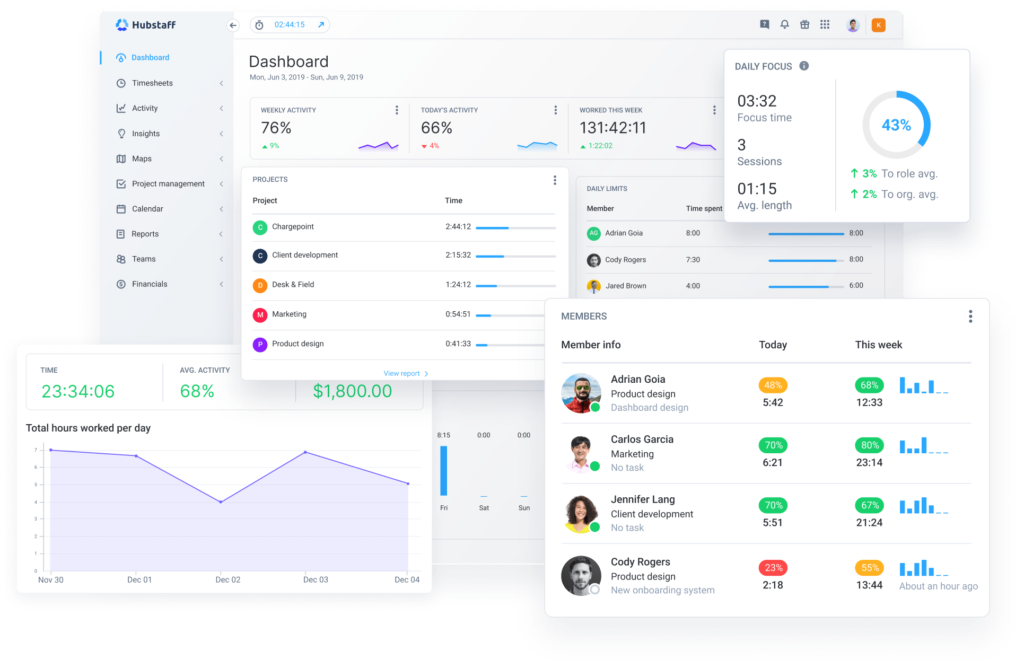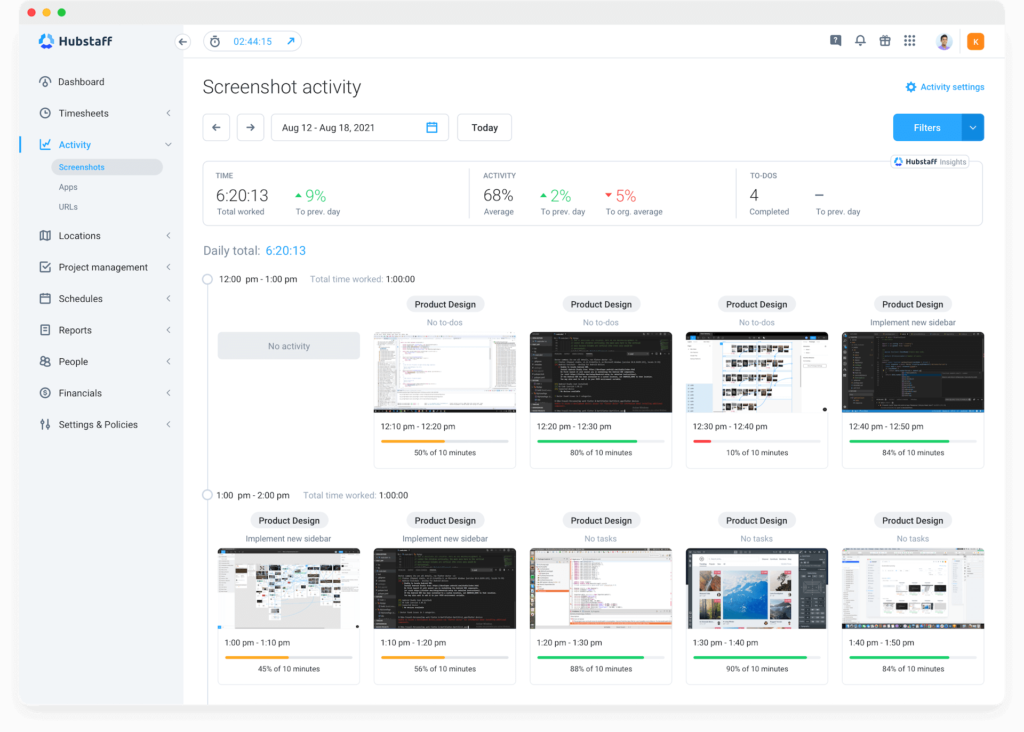Whether you run a Business Process Outsourcing (BPO) company or a Managed Service Provider (MSP), knowing how to manage distributed teams effectively is crucial — after all, your global teams are your most valuable assets. As a BPO or MSP, hiring global talent immensely benefits your bottom line, with lower cost of hiring and a fresh set of perspectives. Hiring great talent isn’t enough; the secret sauce of success lies in knowing how to manage global teams. They can be your most valuable blocks for building and managing a successful business. It’s like finding the best pieces of a puzzle from around the world and putting them together to complete an extraordinary picture while ensuring each piece works in sync, no matter the location or time zone.
However, managing global teams is no walk in the park; when your employees are scattered worldwide, you will face challenges unique to your industry. This could include a potential communication barrier, productivity pitfalls, collaboration challenges, and security and compliance-related issues. According to a study by Gallop, globally dispersed team engagement has dropped to 21% in 2024, the largest drop management teams have seen in the last 12 years. As your business grows, you need action-driven management strategies to improve retention, team engagement, and productivity.
Boost your team’s efficiency with Hubstaff's productivity tools
Why Distributed Team Management Is Crucial for BPOs and MSPs
Knowing how to manage distributed teams strategically is the backbone of BPOs and MSPs, whether teams operate from Mexico, the Philippines, or India. Due to the global nature of the industry, employee churn is quite typical and often caused by irregular work hours that lead to burnout, communication barriers, low engagement, and reduced collaboration. Gallop reports that employee churn alone costs businesses in the U.S. around one trillion dollars annually. Managing remote teams in MSPs or BPOs means tackling key challenges to keep projects on track and ensuring everybody’s on the same page, working towards the same goals.
Pitfalls BPOs/MSPs should watch out for:
- Different time zones may pose communication or miscommunication challenges, leading to errors and project delivery delays.
- A common pitfall is failing to maintain precise communication between management and team members, which leads to unmet client expectations and Service Level Agreement (SLAs) requirements.
- Employee churn (hiring, replacing, and talent loss) drives up costs by increasing hiring expenses and reducing productivity in global teams.
- A major failure is overlooking quality control, which can result in unmet security standards and compliance risks.
By addressing these areas of concern, outsourcing companies can retain highly productive global teams and increase operational efficiency.
Proven Strategies to Manage Distributed BPO and MSP Teams Effectively
BPOs and MSPs are inherently scalable outsourcing industries, constantly growing and expanding their teams across borders. However, this growth comes with various operational challenges, from communication gaps to strict SLA compliance, high client expectations, accurate productivity measurement, and security compliance.
Many leaders are searching for answers to one critical question: how to manage distributed teams in BPOs and MSPs. The simple answer to this question is an employee time tracking and productivity monitoring platform that empowers workforce optimization and identifies inefficiencies through real-time insights on:
- Activity tracking that highlights underutilization and supports optimal staffing decisions.
- Real-time productivity data for monitoring project progress with clarity and precision.
- Client- or project-level reporting on task and resolution time that helps comply with SLAs and build client trust.
Retaining top talent and maintaining sustainable operational efficiency can be daunting as your outsourcing business scales faster. But, with the right tools for distributed teams, you’ll be better equipped to drive success, making smarter, data-driven decisions based on critical operational information like time tracking, project progress, and productivity metrics.
Here are some proven strategies on how to manage distributed teams tailored for BPOs and MSPs — real-world steps you can implement today.
1. Standardize onboarding across regions to maintain consistency at scale
To ensure a consistent onboarding experience across countries, create documented processes for onboarding remote employees. Whether hiring in Manila, Mexico City, or Mumbai, a structured and reliable process gives every new hire the same level of support, information, and guidance. Attach goals to your onboarding document, and define success from the start—reducing turnover, improving quality of work and productivity, and maintaining the right culture fit. These objectives act as a north star and speed up ramp-up time.
A well-crafted onboarding process will:
- Maintain work quality across accounts
- Promote a consistent company culture
- Drive early engagement and team integration
To evaluate and continuously improve your onboarding strategy, track key metrics such as:
- Retention rate within the first 90 days
- Time to productivity (how quickly new hires meet expected output)
- Operational readiness time (how soon they can operate independently)
By leading with these data-driven insights, your leadership teams ensure that onboarding is not just a checklist but a strategic process, which leads to improved workforce optimization.
2. Align team structure with client and time zone demands
As your BPO scales, ensuring seamless task handovers across time zones becomes very important. One of the highly effective strategies is creating role-based or regional pods to manage overlapping shifts. These structured team splits provide clarity and accountability and reduce the risk of critical tasks being overlooked.
Try adding asynchronous communication patterns in workflows to improve communication efficiencies. Align your employees to client-specific workflows through:
- Transparent and traceable written records using project management platforms (e.g., Asana, Trello, ClickUp)
- Email threads and shared documentation via Google Docs or Notion to provide centralized, collaborative knowledge bases
- Secure, organized cloud storage systems to maintain file consistency across teams
These asynchronous strategies will empower team members, allowing your global teams to digest and understand information independently without responding immediately. This can especially benefit non-native English speakers—to process, understand, and act on information at their own pace, reducing misunderstandings and enhancing execution quality.
3. Automate scheduling, shift handoffs, and attendance tracking
Powerful attendance tracking and shift scheduling are the two most crucial components for scaling remote teams in BPOs operating on a 24/7 service model. Scheduling team members based on time zones, weekends, holidays, and even night shifts can significantly reduce employee fatigue and increase their well-being.
For example, a BPO has teams spread across the Philippines, India, and Poland; each region has its own set of holidays like Diwali in India, Holy Week in the Philippines, Constitution Day in Poland, and so on. Now, managing schedules and ensuring round-the-clock coverage is challenging in this context. With intelligent attendance tracking and shift scheduling tools, you can:
- Make sure each employee profile is tied to their regional holiday calendar
- Help managers allocate shifts based on regional holidays
- Ensure continuous service coverage by allocating resources using real-time insights
Access detailed reports that show team absenteeism rate, attendance, missed shifts, late starts, time off, and more. Dig into trends, customize and export reports, and identify workflow bottlenecks before they slow your team.
4. Use time tracking and productivity tools for visibility—not micromanagement
Productivity measurement is one of the most complex yet vital elements of a BPO workforce management. It’s not just based on inputs and outputs; instead, it requires a balanced approach to evaluating qualitative and quantitative outputs. The basic formula of productivity in the outsourcing industry is: Productivity = (Total Output ÷ Total Input) × 100
Typically, outputs could be anything from the number of calls or resolved tickets requiring a set number of hours. This doesn’t necessarily lay it all out on the table. The nuance of calculating productivity lies in putting advanced methodologies, tools, and metrics analysis into place. Give managers insight into how work hours are spent without hovering.
Time tracking software like Hubstaff make time tracking and performance management for distributed teams easy. As your managers can easily identify gaps in utilization or workload balancing across clients and locations, offering complete visibility into:
- Time allocation across tasks and clients, helping identify areas of over- or under-utilization
- Activity levels to ensure that hours logged correlate with active engagement
- Workload balancing through resource allocation based on a real-time view of availability across global teams, preventing burnout and improving service consistency
- Idle time and app usage monitoring, revealing inefficiencies or process bottlenecks
- Output trends mapped to individual or team KPIs, highlighting training needs or performance gaps
Hubstaff also helps you cut down on time-wasting activities. Our data shows that people using AI saved 30 minutes of unproductive time per day. For a 50-person team, this equates to $12,500/month or $150,000/year in reclaimed productivity.
With these high-level insights, your leadership teams can optimize staffing, enhance SLA compliance, and boost client satisfaction, all while supporting a healthy, scalable work environment.
5. Document SOPs tied to SLA deliverables
Properly laid out SLAs (Service Level Agreements) for your outsourcing business can’t be overlooked. SOPs (Standard Operating Procedures) serve as the operational backbone to ensure that clear expectations are documented and service commitments are met consistently. Make sure processes aren’t just internally efficient—they should map directly to what clients expect regarding timeliness, quality, and responsiveness.
SLAs go one step further, helping MSPs reach business efficiencies with these action-packed steps:
- Maintain timeframes, quality standards, and response times defined in SLAs to bridge the gap between client expectations and workflows.
- Standardize how tasks are executed through SOPs, minimizing errors and maintaining service levels.
- Create well-documented SOPs, ensuring new hires have everything they need to meet SLA expectations from day one.
- Clearly defining actions for each workflow step empowers team members to tackle unexpected situations.
6. Train team leads for distributed oversight
Scaling means team leads will manage more people across more locations, and traditional supervision will no longer cut it. At first, equip them with management playbooks to implement KPIs (Key Performance Indicators) tied to SLAs as benchmarks (e.g., client satisfaction rate, resolution times, and ticket closure rates) and leverage workforce management tools to spot trends.
Key practices on how to manage distributed teams:
- Leverage productivity tools with time tracking features to clearly understand time allocation and identify time-wasting activities.
- Train team leads to understand performance dashboards and productivity reports and make adjustments based on real-time data.
- Implement an innovative BPO workforce management system for easy shift planning, workload balance, and real-time visibility into the workflow.
- Encourage SOP creation, review, and adjust workflows occasionally, and implement training for a growth-ready structure.
7. Customize communication cadences by team and role
Not everyone needs in-person meetings. Async daily Stand-ups provide updates for back-office ops and real-time huddles for client-facing teams to keep things moving efficiently.
In fact, the Hubstaff Lean Advantage Report surveyed over 8,000 workers to gain better insights into meeting habits. We found that 13% of their 40-hour workweek was spent in meetings. That’s roughly five work hours per week.
Cutting even a few minutes from each meeting or replacing them with async updates can save time for focused work. Tools like Hubstaff enable this shift by delivering automatic reports and productivity data straight to Slack or email to free up more time for teams to execute.
Start by identifying how communication differs for each role and function. For instance, high-demanding SLA roles need frequent real-time updates, whereas task-based roles can rely more on asynchronous collaboration and less frequent meetings.
Here are a few ways to customize communication cadences for global BPO and MSP teams:
- Segregate communication workflows based on roles—daily Stand-ups for customer-facing support teams, weekly one-on-ones with team leads, and async updates for admin teams.
- Request team leads to record meeting sessions and have written records that can be shared with support teams to reduce meeting overloads.
- Equip managers with performance-tracking dashboards that clearly show performance benchmarks tied to SLAs.
- Audit the effectiveness of meetings, reviewing if they’re driving actions and alignment.
Bonus tip: Have your leadership teams use workforce analytics software to access performance metrics in real-time, cutting down on meeting overload.
8. Build a performance and accountability culture across distributed teams
Aligning workforce management metrics and KPIs is essential to effectively running distributed teams. Regular performance monitoring at the individual level drives accountability and enables accurate productivity measurement. Recognizing top performers and holding every team member to clear, consistent standards is especially critical during periods of rapid growth.
Foster a culture of accountability and autonomy in your globally distributed teams by following these practices:
- Set KPIs based on business objectives that can be measured against performance benchmarks to understand if business goals are being met.
- Use productivity measurement dashboards and project management platforms to gain visibility into team activities.
- Combine performance data with regular one-on-one feedback, recognition programs, and communicated goals to boost team performance and productivity.
- Share work time classification metrics and activity data with employees to boost morale and a sense of accomplishment and ensure teams stay aligned, motivated, and connected—even across time zones.
How BPOs and MSPs Are Winning With Distributed Teams (Mini Case Studies)
As global operations take center stage, future-ready BPOs and MSPs are turning remote team challenges into competitive advantages — and here’s how they’re doing it.
Case Study 1: How Affordable Staff Saved $4.2M Over 12 Years With Hubstaff
Affordable Staff is a leading outsourcing provider specializing in remote staffing solutions. Since its founding in 2010, the company has provided over 6 million hours of outsourcing experience and grown to a team of more than 800 team members across multiple countries.
Challenge: Using freelance marketplaces and hiring platforms, Affordable Staff and their contractors were losing a cut of every billed hour.
Solution: Hubstaff saved $928,750 by replacing the work of 21 employees—automating time tracking, productivity monitoring, and syncing data with payroll and accounting systems.
Results: $4.2M in cost savings over 12 years, 166% growth since 2015, and 80% reduction in management time.
Key takeaways:
- Scaled from 300 to 800+ employees while maintaining complete visibility and operational efficiency
- Data collected through Hubstaff revealed that team leaders spent 80% of their time on administrative work instead of actively managing their teams.
- Affordable Staff uses AI and Hubstaff data to spot knowledge gaps, streamline training, and speed up onboarding for greater efficiency.
Case Study 2: How SupportNinja Saved Thousands on Operations Each Year
Support Ninja is an outsourcing company based in Austin, TX, with operations in the Philippines. The company supports some of the biggest names in Silicon Valley, with clients including Checkr and Harvard Partners. Using Hubstaff’s productivity monitoring features, such as seeing apps and URLs used, activity levels, and screenshot capabilities, SupportNinja was able to help identify roadblocks and identify the most productive members of its outsourced team.
Challenge: SupportNinja faced difficulties scaling its 500+ remote workforce, struggling with onboarding efficiency, consistent productivity, and global payroll management.
Solution: They implemented Hubstaff to track time, monitor productivity, evaluate new hires, and automate freelancer payments across multiple countries.
Results: This led to improved remote team management, faster onboarding, higher productivity, and reduced operational costs.
Key takeaways:
- Streamline overseeing 500+ remote team members efficiently across countries.
- Structured onboarding and cut ramp-up time using activity tracking.
- 100% automated payroll with payment providers like PayPal, Gusto, and Wise.
- Real-time visibility into productivity and app usage.
- Saved thousands on freelancer transaction fees.
Build high-performing distributed teams with purpose, clarity, and trust
Whether you’re scaling remote teams in a BPO or MSP environment, sustainable growth hinges on how well you manage performance across a distributed workforce. Hubstaff’s time tracking features for BPOs can help you scale confidently with real-time updates on project progress, productivity data, shift scheduling during your team’s peak hours, and more. With these powerful tools, you can easily increase team productivity, maintain SLA compliance, and ensure transparent communication.
In industries where dispersed teams are the standard, BPOs, and MSPs face challenges that demand more than manual fixes. The path forward lies in increasing operational efficiency, leveraging real-time data for more intelligent decision-making, and addressing performance bottlenecks at the root. When you lead with visibility, accountability, and purpose, distributed teams don’t just function—they thrive.
Most popular
6 Signs Your Employees Can Tell They’re Being Monitored at Work
Noticing unfamiliar software, restricted access, or slower internet? These might be signs you are being monitored at work. I...
The Complete Guide to User Activity Monitoring: Tools, Benefits, and Ethics
Have you ever noticed how the conversation around monitoring tends to swing between “track everything” and “trust everyone b...
How to Choose the Right Employee Attendance Tracker for Your Team
An employee attendance tracker records time spent on the job, absences, late or abandoned shifts, and other valuable information....
How Agencies Can Leverage AI & Time Tracking to Increase Profits
Why AI Is Powering Agencies, But It’s Missing From the Data Agencies are adopting AI faster than ever – using it for research,...








